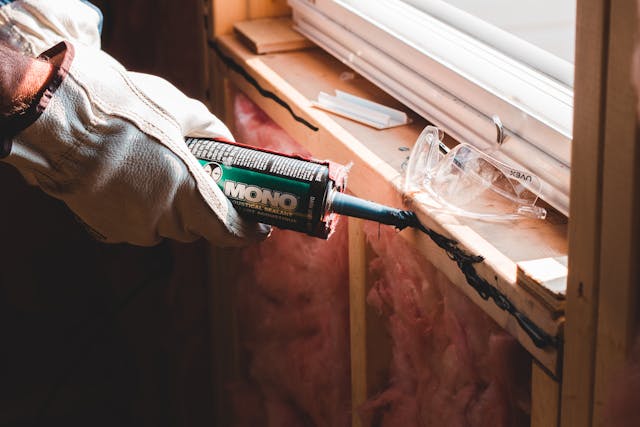How to Seal Gaps and Cracks to Keep Your Home Warm and Energy Efficient
Here's how to seal up those sneaky spots and make your home far more energy efficient, and why it's best to entrust it to the experts.

If your energy bill has been creeping up or your home feels draughty no matter how high you crank the heater, chances are your house is leaking more heat than you realise. Even the tiniest gaps and cracks around windows, doors, skirting boards and vents can let warm air escape and cold air creep in—sending your energy usage (and frustration levels) through the roof.
The good news? With a bit of know-how and a few handy tools—or better yet, a qualified tradie—you can seal up those sneaky spots and make your home warmer, cosier and far more energy efficient.
Here’s how you (or a local pro) can get the job done right.
Why sealing gaps matters
First off, sealing gaps and cracks isn’t just about staying toasty in winter. It’s a smart move for year-round comfort and savings. In summer, it helps keep cool air in and the scorching Aussie heat out, meaning your air con doesn’t have to work overtime. And in winter, it prevents heat from slipping out the door—literally.
Beyond comfort, sealing gaps also:
-
Reduces your energy bills
-
Lowers your carbon footprint
-
Helps control moisture and prevent mould
-
Keeps out insects, dust, and pollen
-
Makes your home quieter by blocking outside noise
Not bad for such a simple fix, right?
Where to look for gaps and cracks
Before you go out buying tubes of sealant, it’s a good idea to do a bit of detective work around the house. Common culprits include:
-
Windows and doors – Check for air movement around frames and weather seals.
-
Skirting boards – Especially in older homes, where timber contracts and leaves tiny gaps.
-
Floorboards – Draughts can rise up through gaps in timber flooring.
-
Architraves and cornices – These spots can open up as your house settles.
-
Vents and exhaust fans – Make sure they’re sealed properly when not in use.
-
Power points and light switches – These are sneaky ones that people often forget.
Tip: on a windy day, run your hand along the edges of windows and doors to feel for cold air. Or better yet, grab a candle or incense stick and watch for flickering smoke near potential problem areas.
Tools and materials you’ll need
If you’re the DIY type, here’s a quick shopping list:
-
Gap filler (acrylic for indoors, silicone for wet areas)
-
Caulking gun
-
Weather stripping or draught excluders
-
Expanding foam (for larger gaps, like around pipework)
-
Door snakes or seals
-
A putty knife or scraper
-
Damp cloth for cleanup
Be sure to choose the right product for each job—some fillers are paintable, others aren’t; some are flexible for movement, others are more rigid. If that all sounds like a bit much, don’t stress—this is where hiring a professional comes in handy.
When to call in the pros
Sure, some gaps you can tackle yourself on a weekend, but if your home’s got more crevices than a mountain range—or you just don’t have the time or tools—it’s worth calling in a local handyman or builder to do the job properly.
Tradies on ServiceSeeking.com.au can:
-
Conduct a thorough inspection
-
Use professional-grade materials for longer-lasting results
-
Identify problem areas you may not have noticed
-
Finish the job faster and cleaner than DIY usually allows
Plus, hiring a pro means you can rest easy knowing the work's done safely and up to standard—no guessing whether you’ve missed a spot or used the wrong filler.
How much does it cost?
The price will depend on the size of your home and how many areas need sealing. Basic jobs might start around $100–$150 for minor gaps, while a full sealing service across the house can range from $300–$600 or more.
But remember—what you invest now could save you big bucks on heating and cooling down the line. In fact, sealing air leaks can cut your energy use by up to 20%, according to Australian energy experts.
Ready to seal the deal?
Whether you’re prepping for a chilly winter or want to cut costs all year round, sealing gaps and cracks is one of the easiest ways to improve your home’s energy efficiency. And you don’t have to go it alone.
Jump onto ServiceSeeking.com.au to find top-rated handymen, builders, and tradies near you. Just post your job, compare quotes, and get the job done right—no more draughts, no more wasted energy, and no more sky-high bills.
Now that’s a warm feeling.
